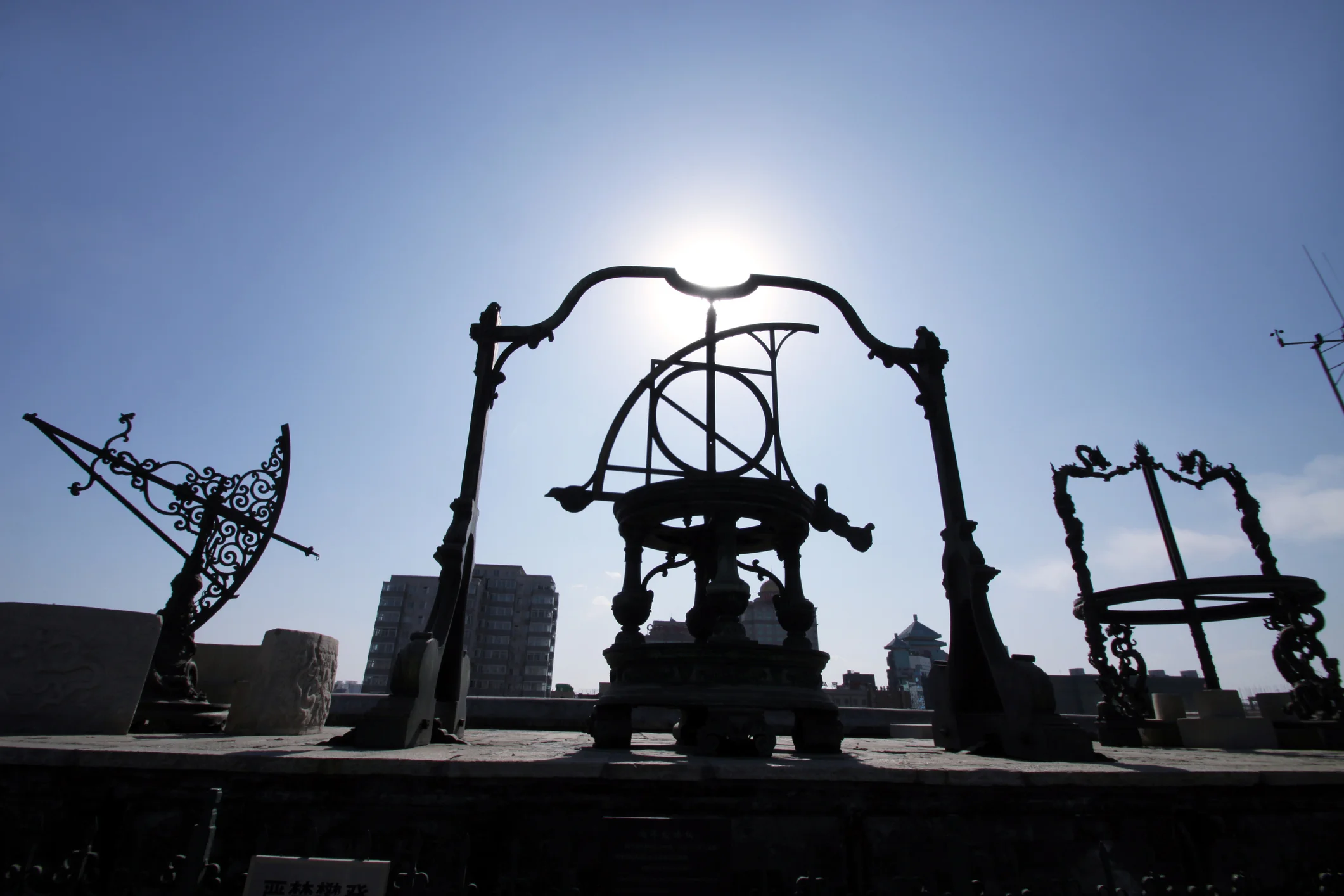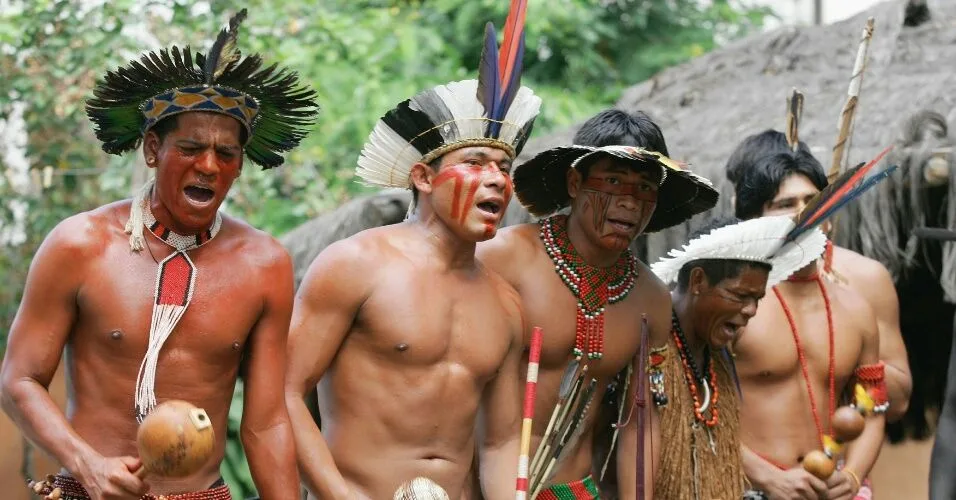Ancient astronomical observatories stand as testament to humanity’s eternal fascination with the cosmos, bridging millennia of scientific curiosity and spiritual wonder across diverse civilizations.
From the windswept plains of Stonehenge to the precise alignments of Mayan pyramids, our ancestors built magnificent structures that tracked celestial movements with remarkable accuracy. These monuments weren’t merely religious sites or architectural achievements—they were sophisticated instruments of scientific observation that helped early civilizations navigate seasons, predict eclipses, and understand their place in the universe. Today, as we rediscover these ancient wonders, we’re continually amazed by the astronomical knowledge encoded within their stones and the ingenuity of cultures that lacked modern technology yet possessed profound cosmic understanding.
🌟 The Dawn of Celestial Observation: Why Ancient Peoples Looked Skyward
The human impulse to study the heavens predates written history. Our prehistoric ancestors noticed patterns in the night sky long before they could record their observations in permanent form. The celestial sphere became humanity’s first clock, calendar, and compass—essential tools for survival in a world governed by natural cycles.
Agricultural societies particularly depended on astronomical knowledge. The appearance of certain constellations signaled planting seasons, while the sun’s position indicated harvest time. Failing to recognize these cosmic signals could mean starvation for entire communities. This practical necessity transformed stargazing from casual observation into systematic science.
Beyond agriculture, ancient mariners used stars for navigation, priests predicted celestial events to maintain their authority, and rulers aligned their power with cosmic order. The sky became a canvas where practical needs, religious beliefs, and scientific inquiry intersected, motivating cultures worldwide to invest enormous resources in understanding celestial mechanics.
Stonehenge: Britain’s Enigmatic Stone Circle ⭕
Perhaps no ancient observatory captures public imagination quite like Stonehenge. Rising from Salisbury Plain in southern England, this prehistoric monument has puzzled researchers for centuries. Constructed in multiple phases between approximately 3000 and 2000 BCE, Stonehenge represents one of humanity’s earliest astronomical achievements.
The monument’s most famous alignment occurs during summer solstice, when the sun rises directly over the Heel Stone, sending rays through the central trilithons. This precision suggests Stonehenge’s builders possessed sophisticated understanding of solar movements and the ability to translate that knowledge into architectural form.
Recent archaeological evidence reveals Stonehenge’s complexity extends beyond simple solar observations. The 56 Aubrey Holes—circular pits forming the monument’s outer ring—may have tracked lunar cycles, specifically the 18.6-year lunar standstill cycle. This theory positions Stonehenge not merely as a solar calendar but as a comprehensive astronomical computer capable of predicting eclipses and other celestial phenomena.
The monument’s construction required moving massive sarsen stones weighing up to 25 tons from quarries 20 miles away, while smaller bluestones traveled nearly 200 miles from Wales. This monumental effort underscores the profound importance ancient Britons placed on celestial observation and ritual connected to cosmic cycles.
Egyptian Astronomical Mastery: Pyramids and Temples 🔺
Ancient Egypt’s relationship with astronomy permeated every aspect of their civilization. The annual flooding of the Nile—essential for agricultural prosperity—coincided with the heliacal rising of Sirius, the brightest star in the night sky. Egyptian priests became expert astronomers, tracking this and other celestial events with remarkable precision.
The Great Pyramid of Giza demonstrates Egyptian astronomical sophistication. Its four sides align almost perfectly with true north, south, east, and west—an achievement requiring detailed knowledge of stellar positions. The descending passage points toward the northern celestial pole where Thuban, the pole star of ancient times, would have been visible.
Egyptian temples functioned as astronomical observatories and cosmic models. The Temple of Karnak features alignments with winter solstice sunrise, while Abu Simbel’s famous sun festival illuminates the inner sanctuary twice yearly. These structures weren’t simply places of worship—they were precisely engineered instruments that connected earthly life with celestial rhythms.
Decoding the Egyptian Sky Calendar
Egyptians developed sophisticated calendar systems based on astronomical observations. Their civil calendar contained 365 days divided into twelve 30-day months plus five additional days—remarkably close to the actual solar year. They also maintained a lunar calendar for religious purposes and recognized the sidereal year based on Sirius’s return.
Star clocks, called “diagonal calendars,” adorned coffin lids and tomb ceilings, depicting constellations used to tell time during night hours. These charts divided the night into twelve hours based on the rising of specific stars called decans. This system reveals not only astronomical knowledge but also the mathematical sophistication required to coordinate multiple calendar systems simultaneously.
Mesoamerican Astronomical Wonders: Precision in Stone 🏛️
Across the Atlantic, Mesoamerican civilizations developed astronomical practices rivaling or exceeding their Old World counterparts. The Maya, in particular, achieved extraordinary precision in tracking planetary movements without telescopes or sophisticated instruments—using only naked-eye observations and mathematical ingenuity.
Chichen Itza: The Serpent Descends
The Pyramid of Kukulkan at Chichen Itza serves as both temple and astronomical marker. During spring and autumn equinoxes, sunlight creates a serpent-shaped shadow descending the pyramid’s staircase—a spectacular effect requiring precise architectural planning based on solar movements. Each of the pyramid’s four sides contains 91 steps, totaling 364, plus the temple platform makes 365—matching the solar year.
Nearby, El Caracol (The Observatory) features windows aligned with Venus’s extreme positions. The Maya obsessively tracked Venus, recording its 584-day synodic period with such accuracy that their calculations differ from modern measurements by only two hours over 500 years. This precision enabled them to predict Venus’s appearances and coordinate military campaigns and royal ceremonies with the planet’s cycles.
The Dresden Codex: Mathematical Astronomy
The Dresden Codex, one of four surviving Mayan books, contains astronomical tables of stunning sophistication. Its Venus tables track the planet’s movements over centuries, while eclipse tables predict lunar eclipses using the Saros cycle—the same 18-year-11-day pattern ancient Babylonians discovered independently.
Mayan astronomers calculated the lunar month as 29.53020 days—incredibly close to the modern value of 29.53059 days. They also tracked Jupiter, Saturn, Mars, and Mercury, integrating these observations into their complex Long Count calendar system that measured time in units spanning thousands of years.
Newgrange: Ireland’s Ancient Light Box 💫
Predating both Stonehenge and the Egyptian pyramids, Newgrange in Ireland’s Boyne Valley represents one of humanity’s oldest astronomical monuments. Constructed around 3200 BCE, this passage tomb features a precisely engineered roof-box that admits sunlight only during winter solstice sunrise.
For approximately 17 minutes each year, dawn light penetrates the roof-box, travels down the 19-meter passage, and illuminates the inner chamber. This phenomenon occurs within days of the solstice, demonstrating Neolithic builders’ sophisticated understanding of solar movements and their ability to maintain precise alignments over millennia.
The monument’s astronomical function likely held spiritual significance, connecting the living with ancestors buried within during the year’s darkest period. This fusion of practical astronomy with ritual purpose characterizes many ancient observatories, reminding us that scientific and spiritual worldviews weren’t always separate domains.
Observing the Observers: Modern Technology Reveals Ancient Knowledge 🔬
Contemporary archaeoastronomy employs cutting-edge technology to unlock ancient observatories’ secrets. Computer simulations reconstruct ancient skies, accounting for precession—the slow wobble in Earth’s axis that shifts celestial positions over millennia. These simulations reveal alignments invisible from modern observations alone.
LiDAR (Light Detection and Ranging) technology penetrates forest canopies to discover previously unknown structures. This method revealed massive Mayan complexes hidden beneath jungle growth, many featuring astronomical alignments. Ground-penetrating radar exposes subsurface features without excavation, preserving sites while expanding knowledge.
Satellite imagery and Geographic Information Systems (GIS) allow researchers to analyze landscape-scale patterns, revealing connections between distant sites and astronomical phenomena. These technologies demonstrate that individual monuments often formed parts of larger astronomical networks spanning entire regions.
The Astronomical Knowledge Transfer: From Ancient to Modern 📚
Ancient astronomical knowledge didn’t disappear with the civilizations that created it—much of it passed through various cultural channels to influence modern astronomy. Islamic scholars preserved Greek astronomical texts during Europe’s Middle Ages, adding their own observations from sophisticated observatories in Baghdad and Samarkand.
Many constellation names we use today trace back to Babylonian astronomy filtered through Greek interpretation. Our seven-day week reflects ancient planetary deities. Even our calendars bear imprints of ancient astronomical observations—Julius Caesar’s calendar reform consulted Egyptian astronomical knowledge, while our current Gregorian calendar fine-tuned that earlier system.
This cultural transmission reminds us that scientific progress isn’t linear but cumulative—each civilization building upon predecessors’ achievements, sometimes preserving knowledge through dark ages, sometimes making quantum leaps, but always contributing to humanity’s growing understanding of cosmic mechanics.
Common Features Across Ancient Observatories 🌍
Despite geographical and temporal separation, ancient observatories worldwide share remarkable similarities, suggesting universal human responses to celestial phenomena and fundamental astronomical principles accessible through careful observation.
- Cardinal alignments: Most observatories align with cardinal directions, particularly north-south axes and sunrise/sunset points during solstices and equinoxes.
- Horizon markers: Natural or artificial horizon features mark significant celestial events, creating calendars visible from specific viewing positions.
- Architectural integration: Astronomical functions integrate seamlessly with religious, political, or funerary purposes, reflecting holistic worldviews.
- Cyclical tracking: Observatories monitor recurring cycles—daily (sunrise/sunset), monthly (lunar phases), yearly (seasonal solar positions), and longer periods (planetary cycles, eclipse cycles).
- Mathematical sophistication: All advanced observatories demonstrate numerical systems capable of precise calculation and long-term prediction.
Celestial Myths and Scientific Reality 🌙
Ancient observatories existed at the intersection of mythology and empirical observation. While modern science separates objective measurement from subjective interpretation, ancient astronomers saw no such division. Celestial bodies were simultaneously physical objects following predictable patterns and divine beings influencing earthly affairs.
This dual perspective didn’t diminish observational accuracy. The Maya tracked Venus with mathematical precision while associating it with Kukulkan, the feathered serpent deity. Babylonian astronomers meticulously recorded planetary positions while interpreting them as omens affecting royal fortunes. Chinese astronomers noted sunspots and supernovae while embedding observations within cosmological frameworks linking celestial and terrestrial realms.
These mythological contexts often motivated the sustained observation necessary for astronomical discovery. Religion provided institutional support and cultural value for what might otherwise seem impractical activities. The interplay between belief and observation reminds us that scientific progress emerges from complex cultural contexts, not pure rationality alone.
Lessons from Stone: What Ancient Observatories Teach Modern Society ✨
Ancient astronomical observatories offer contemporary society more than historical curiosity—they provide valuable lessons about human capability, cultural priorities, and our relationship with the cosmos.
First, they demonstrate that sophisticated scientific understanding doesn’t require advanced technology. Ancient astronomers achieved remarkable precision using patient observation, mathematical reasoning, and multi-generational knowledge accumulation. This reminds us that human ingenuity and dedication often matter more than equipment sophistication.
Second, these monuments reveal cultures that valued long-term thinking. Astronomical observations required decades or centuries to yield meaningful patterns. Societies invested enormous resources in projects benefiting future generations rather than seeking immediate returns—a perspective modern short-term thinking might benefit from emulating.
Third, ancient observatories reflected integrated worldviews connecting science, spirituality, agriculture, politics, and architecture. Their holistic approach contrasts with modern disciplinary fragmentation, suggesting benefits in reconnecting specialized knowledge domains.
Finally, these sites remind us of humanity’s enduring cosmic curiosity. Across all cultures and eras, humans have looked skyward with wonder, seeking to understand our place in the universe. That fundamental impulse connects us with ancestors across millennia and will presumably motivate our descendants’ continued cosmic exploration.
Preserving Astronomical Heritage for Future Generations 🛡️
Ancient observatories face numerous threats—urban development, climate change, tourism damage, and simple neglect. Stonehenge suffers from nearby road vibrations and tourist erosion. Mayan sites battle encroaching jungle and looters. Egyptian monuments contend with groundwater issues and pollution.
International preservation efforts work to protect these irreplaceable sites. UNESCO World Heritage designation provides protection and resources, though implementation varies by region. Digital preservation creates detailed three-dimensional models, ensuring knowledge survives even if physical structures deteriorate. These virtual reconstructions also enable worldwide access to sites too fragile or remote for mass tourism.
Community involvement proves essential for successful preservation. Local populations who understand sites’ cultural and economic value become effective guardians. Education programs teaching children about astronomical heritage create stakeholders invested in long-term protection. Sustainable tourism balances public access with conservation needs, generating resources for ongoing maintenance.
The Ongoing Mystery: Questions Yet Unanswered 🔍
Despite advances in archaeoastronomy, ancient observatories retain mysteries. How did builders achieve such precise alignments without theodolites or compasses? What organizational structures coordinated multi-generational construction projects? Did ancient astronomers understand they were observing planetary orbits, or did they think differently about celestial mechanics?
Some alignments remain controversial. Skeptics argue that with enough stones or structures, random chance produces some astronomical alignments. Researchers debate distinguishing intentional astronomical features from coincidental ones. Statistical methods help, but conclusive proof often remains elusive, particularly for sites lacking written records explaining builders’ intentions.
These ongoing debates keep archaeoastronomy vibrant and exciting. Each new discovery refines understanding while raising fresh questions. Ancient observatories continue teaching us about human history, scientific development, and the eternal human impulse to understand the cosmos surrounding us.
As we stand before these ancient stones, we’re simultaneously looking backward into human history and upward toward the same stars our ancestors observed millennia ago. These observatories bridge time and space, connecting us with the dawn of scientific thought while inspiring continued cosmic exploration. In understanding how our ancestors unveiled celestial mysteries, we gain perspective on our own astronomical journey—one that has taken us from naked-eye observations of planetary wanderings to spacecraft exploring those distant worlds firsthand. The journey continues, building upon foundations laid in stone long before recorded history began.
Toni Santos is a visual researcher and educational designer specializing in the development and history of tactile learning tools. Through a hands-on and sensory-focused lens, Toni investigates how physical objects and textures can enhance understanding, memory, and creativity while exploring the intersections of ancient temporal systems, ritualized time practices, and cultural perceptions of chronology. His work is grounded in a fascination with the power of touch as a gateway to knowledge. From embossed maps and textured alphabets to handcrafted manipulatives and sensory kits, Toni uncovers the subtle ways tactile tools shape cognitive development and learning experiences, while engaging with ancestral calendars and forgotten systems, chrono-rituals and time portals, cultural time perception and myth, and devices and tools of time. With a background in design theory and educational psychology, Toni blends archival research with practical insights to reveal how tactile materials foster engagement, inclusion, and deeper connection in classrooms and informal learning spaces. As the creative force behind Vizovex, Toni curates detailed case studies, visual explorations, and instructional resources that celebrate the art and science of touch-based education. His work is a tribute to: The transformative role of tactile tools in learning The intersection of sensory experience, cognition, and temporal wisdom The craft and innovation behind educational objects and time devices Whether you’re an educator, designer, or lifelong learner, Toni invites you to explore the rich textures of knowledge—one touch, one tool, one discovery at a time.




